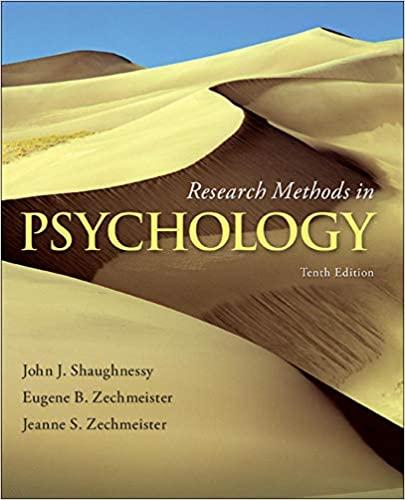To test whether participants in an experiment would help another person, a researcher developed a computer game
Question:
To test whether participants in an experiment would help another person, a researcher developed a computer game that involved maneuvering a robot character at the bottom of the screen to catch balls that fl ew randomly from all angles of the screen.
The screen was split down the middle. Participants were told one side of the screen represented their own game, and the second side represented the game of another person playing in an adjacent room (fi ctitious). Participants could tap the spacebar on the keyboard to move between their own game and the other player’s game, but their robot wouldn’t be seen by the other player. Any balls they caught for the other player would simply disappear from the screen (like other balls in the game). Midway through the playing time, the other player’s robot appeared stuck on the far side of the screen.
The dependent variable was how many balls the participant caught for the other player as a measure of helping.
The researcher hypothesized that people are less likely to help when their attention is focused on themselves. She reasoned that a fast game speed would require participants to focus on their own game, so she manipulated participants’
game speed using two levels, fast and slow. The researcher also predicted that participants would be less likely to help when given incentives to score high in their own game (earn money for over 100 balls caught). She tested three levels of incentive: zero incentive, $5, and $10. Twenty participants were tested in each condition of this complex design. The average number of balls caught for the other player in each condition are presented below:
A. Is there evidence for a possible interaction effect in this experiment?
B. What aspect of the results leads you to be cautious when interpreting an interaction effect, if one were present in this experiment?
C. How could the researcher modify her experiment to be able to test for an interaction effect?
Step by Step Answer:

Research Methods In Psychology
ISBN: 9780077825362
10th Edition
Authors: John Shaughnessy, Eugene Zechmeister, Jeanne Zechmeister





